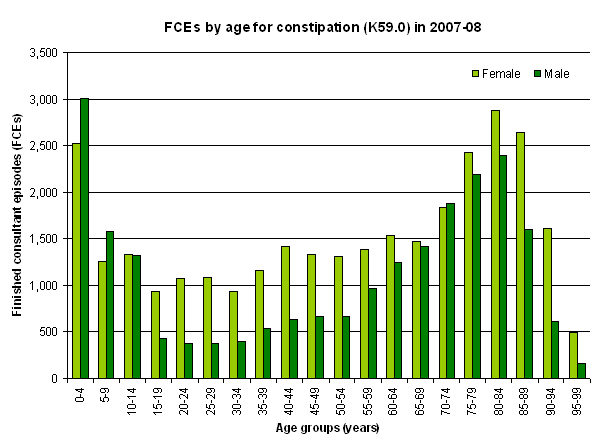IN THIS SITE...

- NHS Choices: constipation
- CORE
- Inpatient data
- Self Service
HES on... Constipation
Constipation is a common digestive complaint that is most likely to result in hospital treatment for children and older people. This article gives an overview of the condition and highlights related 2007-08 HES data.
What is constipation?
Constipation is a common digestive complaint. The term 'constipation' can describe a change in bowel movements that results in a patient going to the toilet less often than is usual for them, or a situation where an individual has difficulty passing stools because they are hard and small.
Constipation is often caused by a low-fibre diet, medication or dehydration, among other things.
Who does it affect?
HES data for the data year 1 April 2025 to 31 March 2025 shows that, in England, children and older people are the most likely to be treated in hospital with the condition (see graph below).
 |
HES facts and figures
HES data for a primary diagnosis of constipation (diagnosis code K59.0 in ICD-10) shows that:
- three quarters (75 per cent) of hospital admissions for constipation are emergency admissions, rather than from waiting lists
- the average (mean) time that patients remained in hospital was 3.6 days
- most patients didn't undergo coded procedures. Where procedures were carried out, the most common were diagnostic endoscopic examinations of:
- the lower bowel, using fibreoptic sigmoidoscope: unspecified (H25 in OPCS-4.4)
- the colon (H22 in OPCS-4.4)
- it was responsible for 53,367 episodes of admitted patient care, accounting for 135,273 occupied bed days.
More information on this topic is available from NHS Choices here.

